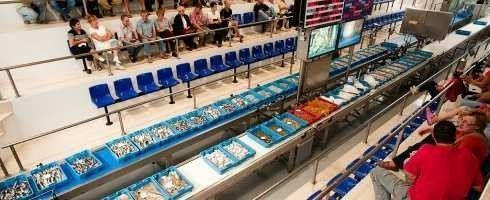 | ||
La llotja 240 anys formant futurs dissenyadors i artistes
Llotja ([ˈʎɔdʒə], [ˈʎɔdʒa], plural llotjes); in Aragonese: loncha; in Spanish: lonja, is a Iberian term for a building that, during the Middle Ages, was used for commercial purpose.
Contents
- La llotja 240 anys formant futurs dissenyadors i artistes
- Escola superior de disseny i art llotja
- Llotjes from the former Crown of Aragon
- Llotjes in the rest of Spain
- References
Others, in feudal towns, were used for fishing and livestock market.
Escola superior de disseny i art llotja
Llotjes from the former Crown of Aragon
The existing llotjes from the former Crown of Aragon are:
Llotjes in the rest of Spain
References
Llotja Wikipedia(Text) CC BY-SA
